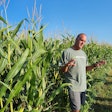
Find out how eggs are secured and used by the US government to create emergency vaccines
Did you know there are secret government chickens in undisclosed locations all over the U.S. laying eggs to be used for vaccine development?
I didn’t – until I heard a recent episode of Planet Money on National Public Radio (NPR) that interviewed Rick Bright, director at the Biomedical Advanced Research and Development Authority (BARDA) in Washington, D.C. Bright began his career in influenza vaccine and therapeutics development at the U.S. Centers for Disease Control and Prevention (CDC), Influenza Division. At the CDC, he focused on avian and human viruses from multiple perspectives including immunology and vaccine development.
“My motivating force through my entire career is a small-town boy from Kansas could have the power or the ability or the knowledge to stop the next pandemic. So, everything I’ve done in my career has put me right here, right now,” Bright told Planet Money.
As you might imagine, Bright is busy working to find a vaccine to combat the new coronavirus (COVID-19) pandemic.
Planet Money co-host Amanda Aronczyk said there are at least 20 companies, universities and labs working to create a vaccine for COVID-19. And the U.S. government – BARDA – has partnered with two companies.
“What they’re doing in the laboratory right now is basically all hands on deck,” Bright said. “They’re working long hours, long days. And they have shifted people away from other vaccine or drug products or projects onto the coronavirus.”
Vaccine development
While there are other, faster ways to make a vaccine that do not involve chickens, we’ll just focus on the egg-derived ones here.
How is a vaccine created from a chicken egg?
“It is a shockingly fragile, delicate, expensive process involving chicken eggs – thousands of them,” Planet Money co-host Sarah Gonzalez said. “And hens only lay one egg a day, so you need thousands of chickens working around the clock for their one egg. And then those eggs report for work straight from a farm to a pharmaceutical company.”
Eggs are placed on a conveyor belt and the shells are penetrated by needles, which then inject a live flu virus into the egg. The hole is sealed, and the eggs are incubated for several days to grow the virus. When the virus is ready, the eggs go back on the conveyor belt. The top one-tenth of a percent of the eggs are cut off and suction needles vacuum out the egg whites, where the virus has grown. The egg whites are then placed into a centrifuge to separate any foreign particles, such as egg shells, and then the virus is killed by chopping it up and “washing” it. What’s left – almost no actual egg white at this point – is mixed with other fluid to become the vaccine.
National security
The whole process is very slow and takes many months and many eggs. In an emergency, like the one we’re experiencing now, that problem is exacerbated.
“Very few people realize that, in a pandemic influenza outbreak, that you need 900,000 chicken eggs every single day for a six- to nine-month period of time to make the vaccine supply needed just for the United States,” Bright said.
For that reason, the U.S. government has secured a large number of layer flocks – its egg supply program. In the interest of national security, the undisclosed number of layer farms are located in top-secret locations: these are life-saving chickens, after all.
And, if we’re fortunate enough to be living in a time where an emergency vaccine is not needed, the eggs that are not used for vaccines are then used in animal feed.
“The government is paying for a year-round supply of eggs just in case there’s a pandemic flu outbreak, so that a pharmaceutical company can turn on the machines right away,” Gonzalez said. “No one has to go looking for new chickens. And if the eggs are not used to become a vaccine, which happens often, the government still pays for them. They become animal feed. Because what the government is doing here is creating a market for the down times when we’re not in the middle of a crisis just to keep the chickens around, keep up the capability.”
















